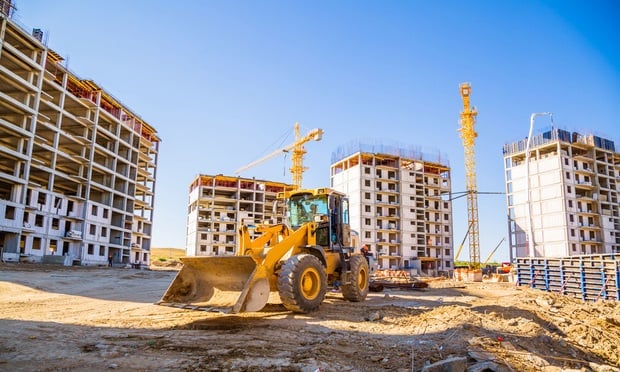Healthcare real estate entered 2023 on a high, but exuberance in the sector hides some paradoxes. At once both diversifying and consolidating, expanding and contracting, there's more than meets the eye test for the still-frothy sector.
Kidder Mathews, the largest independent commercial real estate firm on the West Coast, points to what's happening on the West Coast to understand the range of dynamic market movements.
Diversification & Consolidation
In the Southwest, the more things change the more they stay the same. Medical office is expanding beyond its niche, specifically with more autism Applied Behavior Analysis therapy, behavioral health, and psychiatry use, as well as more atypical, non-wet medical requirements, according to Michael Dupuy, Kidder Mathews SVP and Managing Director in Phoenix. Yet, no matter what application, well-located and tenanted properties and strong borrowers still benefit the most.
While there's diversification in healthcare real estate applications, there is a strong trend of consolidation on the investment side, as seen in the Pacific Northwest. "Private equity and health systems will continue to merge and acquire private practices to expand their reach, which mitigates the issues of labor shortages and costs to occupy," said Will Frame, Kidder Mathews EVP in Tacoma, Washington.
In Oregon, a lack of competition has created opportunities for local and regional investors. "Many of the larger investment firms now have more rigid guidelines for acquisitions, whereas the smaller regional groups can capitalize on assets, especially in secondary and tertiary markets," said Alexandra Henderson, Kidder Mathews SVP in Portland.
And in Los Angeles, Kidder Mathews VP Phil Petruso says individual deals depend on credit and the landlord's motivation. "I represent the tenant side. My most recent deal was for 12,000 square feet with no rent increase for the first five years, then a 10% bump," said Petruso.
Expansion & Contraction
The shift from on-campus to off-campus healthcare has been a major trend in recent years, with health systems relocating and expanding services in closer proximity to spread-out consumer segments. COVID-19 served to escalate the trend, both from a risk avoidance standpoint and to better serve work-from-home professionals.
"The continued rise of suburban ambulatory surgery centers handling elective and low-risk surgeries and the work-from-home trend will further support the reasoning for medical growth in the suburban markets by getting into the communities in smaller satellite locations," said Drew Frame, Kidder Mathews SVP in Tacoma.
While MOBs and related healthcare properties are expanding, deal volume is contracting. Higher interest rates mean fewer options for MOB investors in the capital markets, resulting in a "significant slowdown" in transactions in the last several months. Cap rates have increased by 50 and 100 bps for multi-tenant and single-tenant MOBs, reported Will Frame. In Arizona, smaller owner-users are staying active with acquisitions in the $1 million to $5 million range while the large asset trades have been slowed by a shrinking buyer pool and reduced inventory, according to Dupuy.
"Our expectation is that investment firms will close on approximately half the amount of properties they closed on in the previous two years," said Will Frame. "The question is whether sellers will temper their expectations or wait for cap rates to compress again."
In Los Angeles and Portland, a different story is unfolding. "Healthcare real estate will continue to grow — there has been a shortage of quality space for the past five years," said LA's Petruso. This has led to continued strength in the healthcare investment category.
Henderson says the interest in healthcare real estate in Portland has investors looking outside the asset class. "There will be a significant amount of opportunity as various asset classes look to convert to healthcare," she said. "Creative deal structures will be key."
Specialty Real Estate Specializes
Specialized, turnkey healthcare space is seeing strong leasing activity. For instance, in LA an increase in dialysis interest has nephrologists interested in their own units, reports Petruso. Opioid treatment clinics and behavioral health are also seeing increased interest.
Meanwhile, Kidder Mathews' Greater Puget Sound offices in Washington report rental rates rising approximately 10% annually over the last two years in response to a growing capital infusion from landlords.
"Landlords willing to spend money on improving suites will reap the rewards of new leasing activity," said Dupuy, whose Phoenix team has completed around 40 deals year to date, successfully pushing annual increases of 3.5% to 4% in some transactions. "Tenant activity is out there, but space must be ready to lease quickly."
Kidder Mathews' Greater Puget Sound experts project a healthy MOB leasing market with a focus on second generation medical suites, spec suites, and turnkey deliveries. Phoenix should also see continuing demand for ready-to-go healthcare space and owner-user opportunities.
As with healthcare practitioners, details are critical in this economic cycle, whether an MOB stakeholder is diversifying, consolidating, expanding, contracting, or some of each.
"With money tight at the moment and lenders more discerning regarding refinances and new acquisitions, strong operators see this period as one of opportunity," Dupuy said.
© 2024 ALM Global, LLC, All Rights Reserved. Request academic re-use from www.copyright.com. All other uses, submit a request to [email protected]. For more information visit Asset & Logo Licensing.





